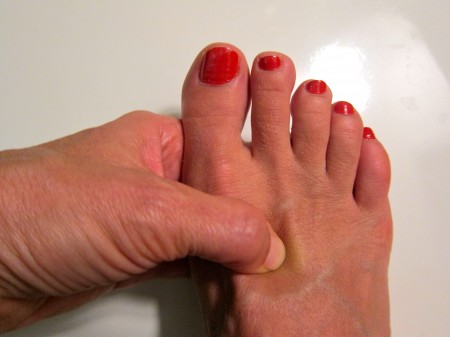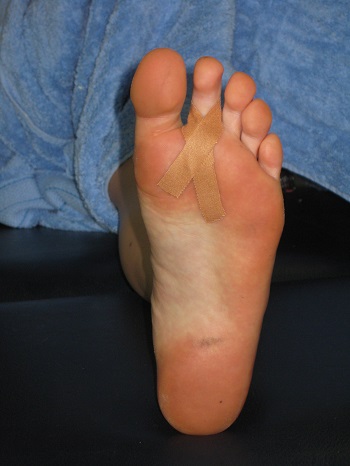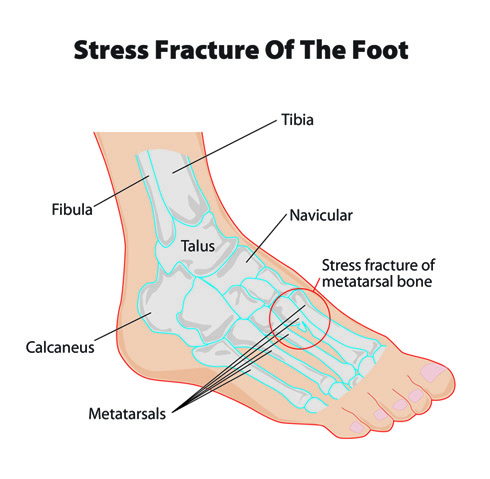Forefoot Pain
Who would have thought so many problems can occur in our forefoot?
At Pioneer Podiatry, we treat a wide range of problems associated with forefoot pain and deformity.
Morton’s Neuroma
A Morton’s Neuroma is a common cause of forefoot pain, usually characterised by shooting, burning sensations from the ball of the foot extending into the toes.
A neuroma normally develops between third and fourth metatarsal head from increased pressure on the nerve sheath. This is usually due to a collapsed metatarsal arch, and tight fitting footwear often makes it worse.
How is it treated?
Treatment may involve avoiding aggravating footwear, stretching the toes and recreating the metatarsal arch to offload pressure from the aggravated neuroma.
If conservative treatment is not successful, this would suggest the neuroma is very large in size, then ultrasound-guided cortisone injection, nerve ablation or neuroma surgery may be required. The earlier conservative treatment is introduced, the greater chance of avoiding big needles and surgery!
Hammer/Claw toes
Hammer or claw toes form because your foot is trying to grip onto the ground excessively, often to gain more balance. Your toes will be forced to grip if the general foot structure is not working properly, often leading to forefoot pain.
How is it treated?
Conservative care will stretch, strengthen and stabilise your muscles and toes for easier, more comfortable walking.
Plantar Plate Disruption
Plantar plate tear/sprain is seen in a broad spectrum of patients, however, is more common in ladies in their 40-50’s. It is also seen in highly active men and women who perform high impact sports such as running, tennis, netball etc. The plantar plate is a fibrous ligament that connects the bottom of the base of the toe to the corresponding metatarsal head. It protects the metatarsal head from excessive pressure, prevents overextension of the toes and prevents the toes from splaying or spreading.
How does it develop?
In situations where the big toe joint is not functioning correctly (such as a bunion or osteoarthritis), or where the metatarsal (forefoot) arch has collapsed, this can add even further pressure onto the second and third toe joints, where plantar plate tears are most frequent. Over time, degeneration can occur until the point where the plantar plate can stretch, weaken and tear leading to forefoot pain.
Considerable swelling and tenderness is generally present on the bottom of the foot at the junction between the second or third toe, and the corresponding metatarsal head.
How is it treated?
Treatment options can include ice, anti-inflammatory gels, taping, Foot Supports (Orthotics) with extra metatarsal arch support– all of which are designed to reduce pressure on the plantar plate and encourage healing. However, where pain fails to settle, or considerable toe deformity exists, then direct surgical repair of the plantar plate may be required.
Capsulitis
Capsulitis is an inflammation of a joint capsule causing forefoot pain. This often occurs at the second metatarsal-phalangeal joint (joint where second toe meets second metatarsal). Enormous load goes through the metatarsal joints during toe-off phase of gait, and in some people the joints can become aggravated and inflamed. More commonly, the second metatarsal joint will become inflamed, as the second metatarsal is normally the longest metatarsal, so therefore is the last pivot point during toe-off. The second metatarsal joint will also be overloaded if the big toe joint is not functioning properly (due to bunions for example) or if the metatarsal arch has collapsed.
How is it treated?
Treatment involves foot stretching and strengthening, ice and anti-inflammatory gels, and offloading the second metatarsal joint by way of strapping, correct footwear &/or Foot Supports (Orthotics) with extra metatarsal arch support.
Sesamoiditis
Sesamoiditis is an irritation of the sesamoid bones, which are two tiny bones within the tendons that run to your big toe. Your sesamoid bones are active every time you push off against your big toe, and can become quite irritated and inflamed. If the pain persists (often because you have not stopped training), then a stress fracture of the tiny metatarsal bones may result.
Pain presents under the ball of your foot behind your big toe, and can range from a mild ache to an intense throbbing. Two of its major causes are increased activity and high-arched feet.
How is it treated?
Treatment for this type of forefoot pain will vary depending on the severity of your condition and may include rest from aggravating activities, ice and anti-inflammatory medication and deflecting pressure away from the injured sesamoids. If left untreated, the sesamoid bones may ‘die’ and need to be surgically removed – so DO NOT ignore this pain!!
Stress Fracture
A stress fracture is a small fracture in the bone, due to repetitive loading. Any activity that places high impact stress on the foot can lead to a foot stress fracture – for example running, tennis, netball, football. During exercise the metatarsals are put under a great deal of stress as they act as the ‘bridge’ between the mid foot and the forefoot. When you transition into the toe-off phase of gait, forces going through the metatarsals are at their greatest and this is when metatarsal stress fractures are most likely to occur.
How is it treated?
Immediate rest from aggravating activity is required, and possible moonboot or deflection padding to allow the fracture to heel.
Intermetatarsal Bursitis
What is a Bursae?
A bursae is a fluid-filled cushioning sac. They are located near tendons, ligaments, skin, and muscles that would otherwise rub directly across the surface of a bone. Bursae are very important to prevent friction, absorb shock, and decrease the wear and tear between moving structures.
How does Intermetatarsal Bursitis develop?
Bursae can become inflammed and aggravated (bursitis) when increased pressure or stress is placed on them. Sometimes additional bursae may even form in response to increased stress and friction. There are multiple bursae located in the forefoot area, but the bursae in between the metatarsals is a common cause of pain (intermetatarsal bursitis).
How is it treated?
Treatment involves re-creating the metatarsal arch and therefore reducing the pressure in the forefoot – via correct footwear, Foot Supports (Orthotics) with metatarsal arch support, foot strengthening exercises etc.
Metatarsalgia
Metatarsalgia is a general umbrella term for forefoot pain beneath the ball of the foot, or the area just before the toes. The pain may be located beneath the second, third and fourth metatarsal heads, or may be more isolated at the first metatarsal head behind the big toe.
How does it develop?
Metatarsalgia is usually the result of an increase of pressure on one area of the forefoot due to faulty foot mechanics.
Bunions, hammer toes, short metatarsal bones, collapsing arches, high-arched feet, stress fractures, Hallux Limitus, arthritis, plantar plate rupture, Capsulitis, Intermetatarsal bursitis are all possible causes of Metatarsalgia – therefore a more distinct diagnosis should be given.




